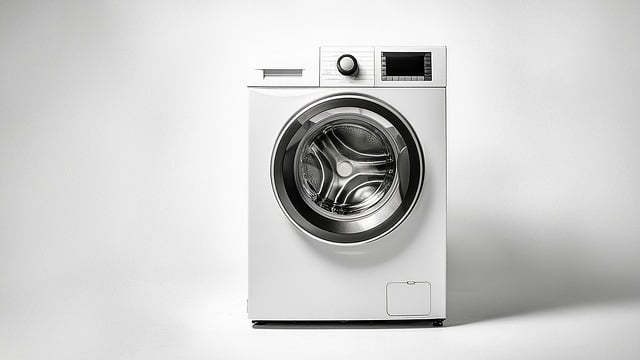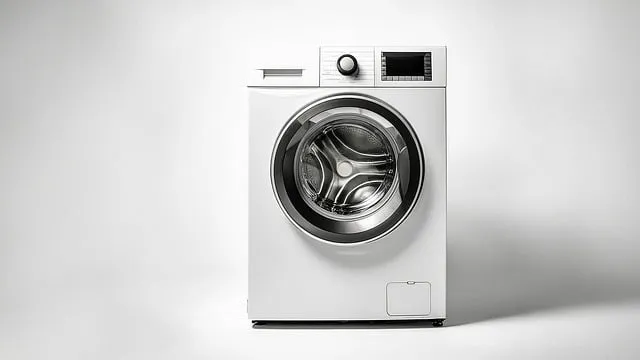How Can You Improve Your Dryer’s Efficiency Through Maintenance?
Next, tackle the dryer vent. Over time, lint builds up in the vent, restricting airflow and causing your dryer to overheat. It’s like trying to breathe through a straw while running a marathon—hardly efficient! Disconnect the vent from the back of the dryer and clean it out at least once a year, or more if you use your dryer heavily.
Also, check the vent hose. If it’s crushed or kinked, your dryer’s performance takes a hit. Think of it like trying to push water through a bent hose; it just doesn’t flow right. Replace or straighten any problematic hoses to ensure optimal airflow.
Another tip? Keep your dryer’s drum and seals clean. Sometimes, grime builds up, making the drum work harder to dry your clothes. It’s like trying to play a record on a dirty turntable—friction and wear slow things down. Wipe down the interior with a damp cloth and ensure the door seals are intact to keep air flowing freely.
Lastly, consider scheduling a professional inspection. Just like you would take your car in for a check-up, a technician can spot potential issues that you might miss. They’ll delve into the inner workings of your dryer to ensure everything is running at peak efficiency.
Maximize Your Dryer’s Efficiency: Top Maintenance Tips You Need to Know
Next, let’s talk about the dryer vent. Over time, dust and lint can accumulate in the vent, restricting airflow. This can lead to longer drying times and increased energy consumption. To prevent this, clean the vent and ductwork at least once a year. It’s like giving your dryer a fresh breath of air, helping it breathe easier and work more effectively.
Don’t forget about the drum! Wipe it down periodically to prevent any buildup of detergent or fabric softener residue. A clean drum means cleaner clothes and a dryer that doesn’t have to work extra hard. Also, check the seals around the door to ensure they’re intact and functioning. A faulty seal can lead to heat loss, wasting energy and leaving your clothes damp.
Lastly, make sure your dryer is level. A dryer that’s off-kilter can cause excess vibration and noise, not to mention wear down parts prematurely. Use a level to adjust the feet if needed, ensuring your dryer operates smoothly.
Taking these simple steps can significantly extend the lifespan of your dryer and keep it running like new, so you can enjoy dry clothes and lower energy bills without a hitch.
Boost Your Dryer’s Performance: Essential Maintenance Hacks Revealed

First up, let’s talk lint traps. These little filters are your dryer’s first line of defense against lint buildup, but they’re often overlooked. Imagine trying to breathe through a clogged straw—that’s your dryer struggling with a blocked lint trap. Clean it before every load. It’s quick and can save you from bigger problems down the road.
Next, check the venting system. A blocked vent is like putting a dam in a river; it restricts airflow and makes your dryer work harder than it should. Regularly inspect the vent hose and make sure it’s clear of lint and debris. A good rule of thumb is to clean it out at least once a year. If you’ve got a long venting path, consider using a vent cleaning kit to reach those tricky spots.
Don’t forget the dryer drum. A quick wipe-down with a damp cloth can remove any residue or spills that might affect performance. And while you’re at it, inspect the drum’s seals and bearings. If you notice any wear or tear, it might be time for a replacement.
Lastly, ensure your dryer is level. A dryer that’s out of balance can cause excessive noise and uneven drying. Use a spirit level to check, and adjust the feet if necessary to keep things stable.
Is Your Dryer Underperforming? Simple Maintenance Steps to Enhance Efficiency
Next, take a peek at the dryer vents. Over time, these can get clogged with lint, which can restrict airflow and cause overheating. Think of the vent as the dryer’s air highway—if it’s congested, traffic slows down. Use a vacuum or a vent brush to clear any debris. For a deeper clean, you might even consider professional help if it’s been a while.
Also, make sure the dryer’s drum is spinning freely. If it’s not, clothes won’t dry evenly. Sometimes, a small object can get stuck, causing friction and poor performance. Check the drum for anything that shouldn’t be there and remove it.
Finally, check the temperature settings and make sure they’re working correctly. Sometimes, it’s as simple as adjusting the settings to get your clothes perfectly dry. A dryer that’s running hot but not drying efficiently might need a thermostat check.
Keeping up with these basic maintenance steps can transform your dryer’s performance, making it work as efficiently as it did when it was brand new. So, before you think about buying a new dryer, give these tips a try—you might just be amazed at the difference!
Dryer Efficiency on the Decline? Expert Tips for Effective Maintenance
First off, let’s talk lint. It might seem minor, but a clogged lint trap can seriously hinder your dryer’s efficiency. Think of it as a traffic jam in your dryer’s airflow. Make it a habit to clean out the lint trap before every load. It’s quick and keeps the air flowing freely, which is crucial for efficient drying.
Next, check the dryer vents. A blocked vent can be a major efficiency killer. If your dryer is taking forever to dry clothes, it might be struggling with a vent that’s clogged with lint or debris. Regularly inspect and clean the vent to ensure it’s not obstructed. It’s a bit like giving your dryer a clear path to do its job.
Also, don’t overlook the dryer’s drum. Sometimes, small objects like coins or buttons can obstruct the drum’s movement, causing inefficiencies. Give the drum a spin and listen for any unusual noises. If you hear something odd, take a look and remove any debris that might be causing the trouble.

Lastly, consider the dryer’s age. Like any appliance, dryers have a lifespan. If yours is older and starting to show signs of sluggishness, it might be time to evaluate its efficiency. Regular maintenance can help, but sometimes, an upgrade could be more cost-effective in the long run.
Keeping your dryer in tip-top shape isn’t just about saving time; it’s also about saving energy and money. A well-maintained dryer works more efficiently, so you get your clothes dried faster and reduce those energy bills.
Unlock Peak Dryer Performance: Proven Maintenance Strategies for Better Efficiency
First things first, you’ve got to clean the lint trap after every use. It might seem like a no-brainer, but you’d be surprised how many people skip this step. A clogged lint trap is like a traffic jam for hot air—it stops your dryer from doing its job and could even spark a fire hazard. Just pull it out, give it a quick swipe, and you’re good to go.
Next up, don’t forget about the dryer vent. That’s the tube leading outside, and it’s where lint likes to sneak off to when you’re not looking. A clogged vent can seriously mess with your dryer’s efficiency and even cause overheating. Grab a vent brush or call in a pro to give it a good clean at least once a year. Trust me, your dryer will thank you!
And hey, when was the last time you checked the drum seal? This little strip of felt around the drum edge keeps the hot air inside where it belongs. If it’s worn out or coming loose, you’re losing precious heat—and that means longer drying times and higher energy costs. A quick inspection can save you a lot of headaches down the line.
Lastly, keep an ear out for strange noises. If your dryer starts to sound like it’s hosting a rock concert, it’s time to take action. Squeaks, thumps, or grinding sounds could signal anything from a worn belt to a misaligned drum. Fixing these early keeps your dryer running smoothly and extends its lifespan.

